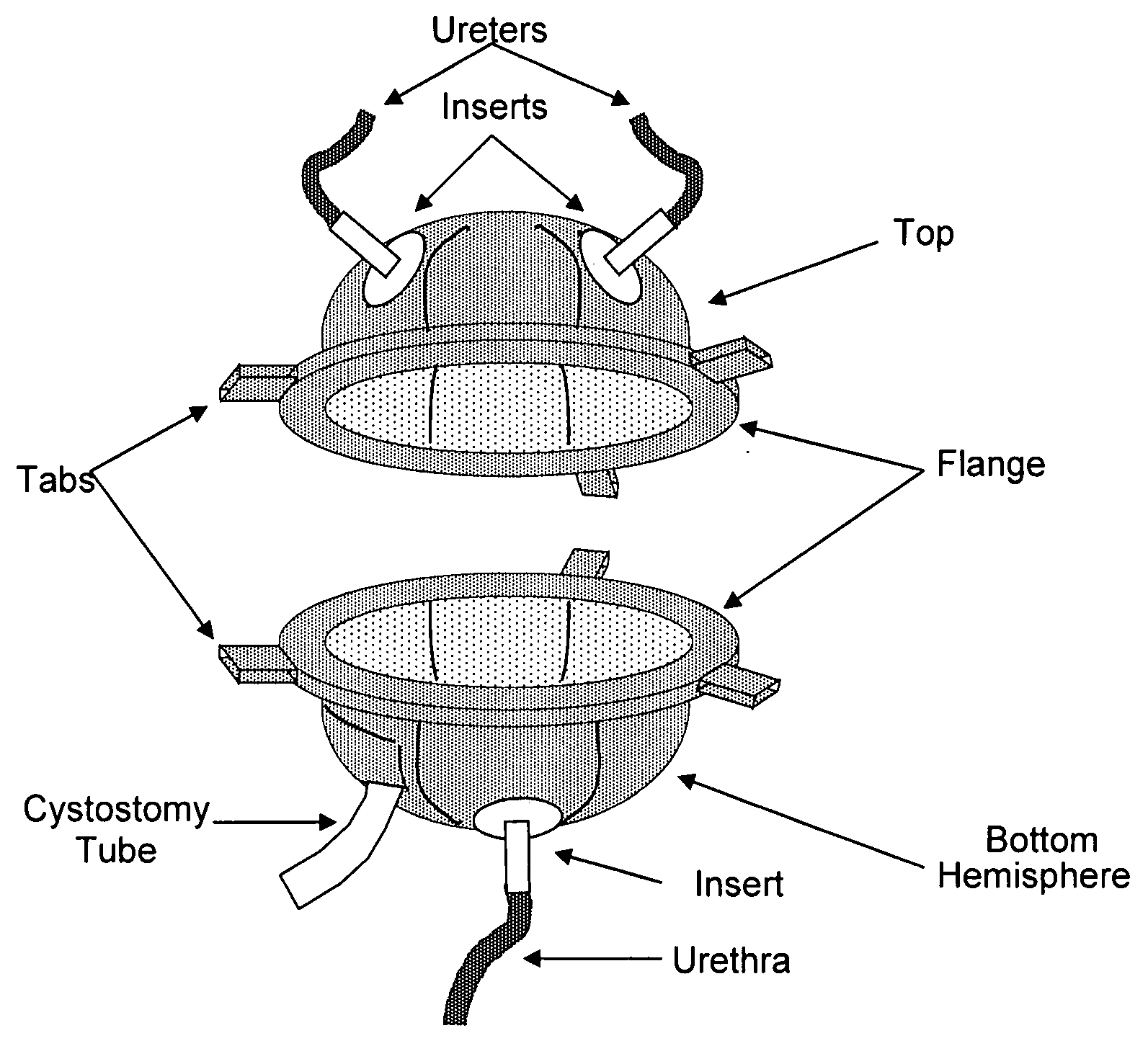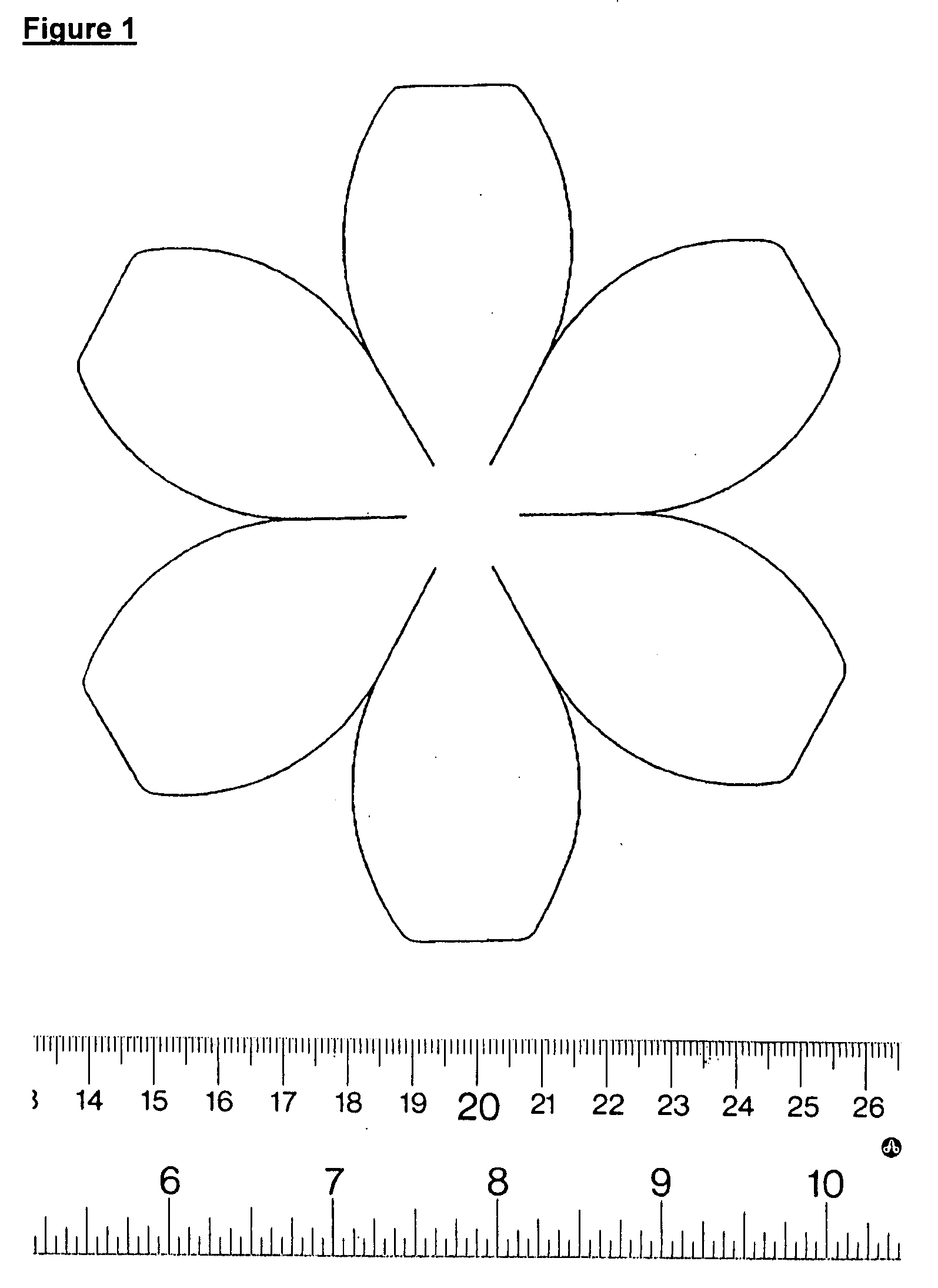Scaffolds for organ reconstruction and augmentation
a scaffold and organ technology, applied in the field of neoorgan constructs and methods for tissue and organ reconstruction, repair, augmentation and replacement, can solve the problems of deterioration of the urinary bladder in patients, deterioration of the bladder, and uneven success in many other organ fields
- Summary
- Abstract
- Description
- Claims
- Application Information
AI Technical Summary
Benefits of technology
Problems solved by technology
Method used
Image
Examples
example 1
Creation of Bladder-Shaped Polymeric Matrices or Scaffolds
[0111] The neo-organ constructs described herein are presented using neo-bladder constructs as an example. While reference is made here to neo-bladder constructs, it will be understood that the methods and materials described herein are useful for creating a variety of neo-organs and neo-vessel augmentation constructs, including, for example, neo-kidney augmentation constructs.
[0112] Manufacture of neo-bladder matrix or scaffold. The neo-bladder matrices or scaffolds for tissue reconstruction, repair, augmentation, or replacement are constructed using polyglycolic acid (PGA) non-woven felt (BMS 2.5 mm thick, 58 mg / cc or 99 mg / ml). The PGA non-woven felt has an average fiber diameter of about 15 μm, an interfiber distance between about 0 to about 200 μm, and dimensions of about 10 cm by about 10 cm. The starting material for constructing the non-woven felt is PGA or PLGA 10:90 or 15:85, having a molecular weight MW of 100 kD...
example 2
Cell Harvest and Culture
[0145] Biopsy procurement. In contrast to previous studies in which a 1×1 cm biopsy was taken from the side of the bladder using a scalpel to dissociate the tissue, the tissue samples used to create the neo-bladder constructs described in this Example were obtained by taking a 1×1 cm biopsy from the bladder apex, using a staple method. Previous biopsy procedures, such as the methods described in U.S. Pat. No. 6,576,019 by Atala et al., removed tissue from the vesical dome in general. In contrast, the biopsy procedures used herein remove tissue from a specific portion of the vesical dome, the bladder apex. Removing tissue from the bladder apex has been shown to provide a greater yield of useful cells. Useful cells refers to viable cells that are capable of expansion and seeding on the neo-bladder scaffolds described herein
[0146] The staple method used herein involves making a loop in the apex of the bladder, stapling the base of the loop, and excising the lo...
example 3
Cell Seeding on a Polymeric Matrix or Scaffold
[0151] Neo-bladder matrix or scaffold seeding with SMC. After the smooth muscle cells (SMC) are harvested and expanded as described above in Example 2, the cell pellet is resuspended in 6 ml of SMC growth medium. The matrix or scaffold is removed from the pre-wetting container using forceps and is placed in an empty sterile cell-seeding container (see FIGS. 13 and 14, originally designed and manufactured by Tengion Inc.). In one embodiment, the cell-seeding container utilizes a Rubbermaid plastic three quart container as a seeding vessel and bioreactor for the culture period prior to shipping. The container is wider than it is tall which is useful when seeding the matrix or scaffold with cells. The lid of the container can be removed when the seeding of the neo-bladder takes place. The lid can then be closed and sealed utilizing a PALL acro-0.2 um PTFE filter disc for gas exchange. This seeding container can hold up to two liters of med...
PUM
 Login to View More
Login to View More Abstract
Description
Claims
Application Information
 Login to View More
Login to View More - R&D
- Intellectual Property
- Life Sciences
- Materials
- Tech Scout
- Unparalleled Data Quality
- Higher Quality Content
- 60% Fewer Hallucinations
Browse by: Latest US Patents, China's latest patents, Technical Efficacy Thesaurus, Application Domain, Technology Topic, Popular Technical Reports.
© 2025 PatSnap. All rights reserved.Legal|Privacy policy|Modern Slavery Act Transparency Statement|Sitemap|About US| Contact US: help@patsnap.com



